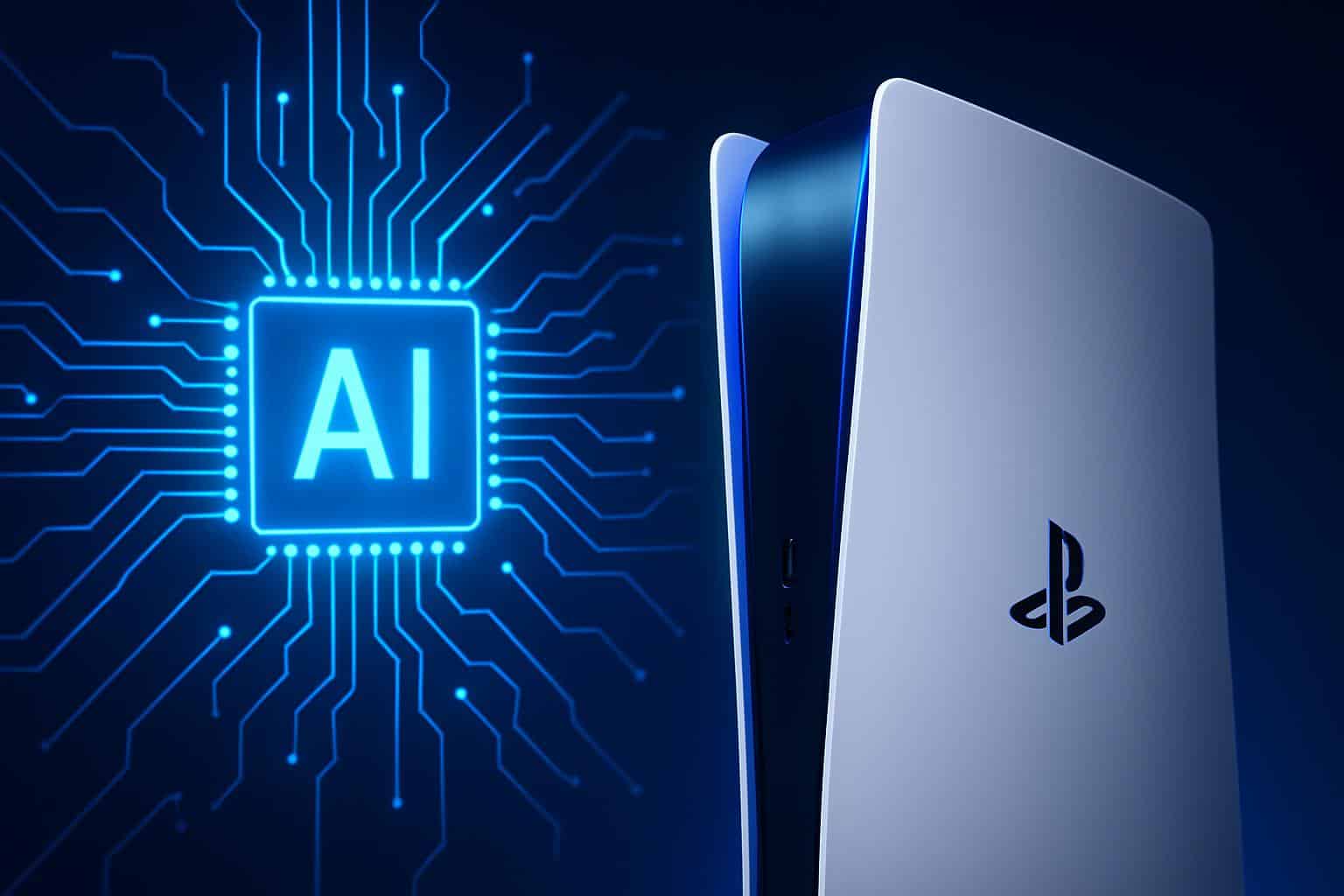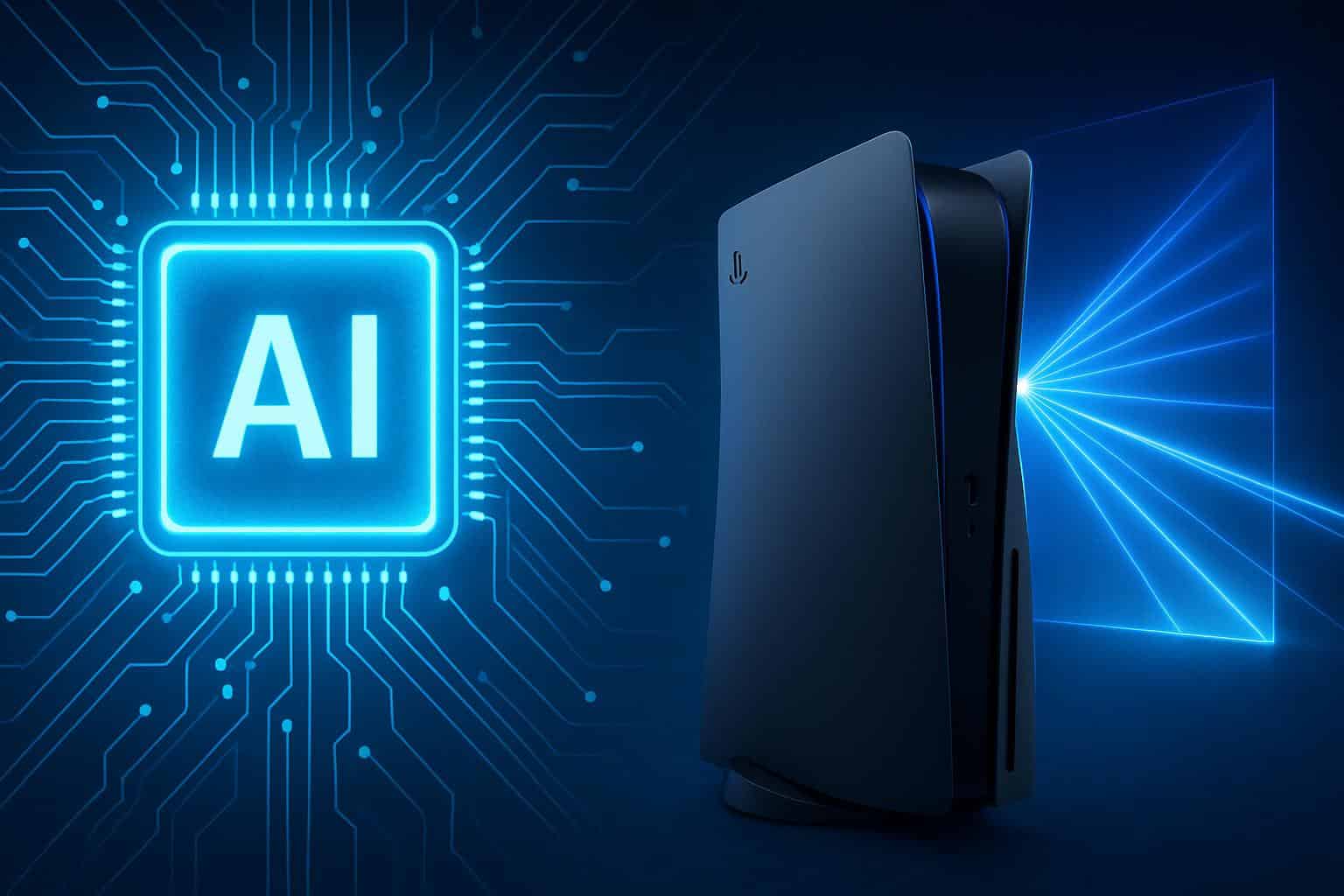Sony is laying the groundwork for a generational graphics leap in its next console by introducing hardware that “is not part of the status quo” and thinking more about what they want to enable players to do rather than the Cell architecture or anything else. Rather than do more pushing against the wall with faster CPU and GPU blocks, AMD is adopting a new architectural strategy alongside its chiplet vision that combines traditional rasterization gaming with neural acceleration, specialized ray-tracing hardware, and smarter memory bandwidth management.
The roadmap is part of PlayStation system architect Mark Cerny and AMD leadership’s vision, which promises to eliminate bottlenecks that hinder frame rates, lighting quality, and open‑world streaming.
- Why Sony Is Reconsidering the GPU Design Approach
- AI‑Driven Rendering Is Backed by Neural Arrays
- Radiance Cores To Enable Real-Time Ray Tracing
- Universal Compression to Increase Effective Bandwidth
- What This Could Mean for Game Development
- Competitive Landscape and Open Questions
- The Road Ahead for Sony, AMD, and PlayStation 6

It’s a recognition that brute force is no longer scaling as effectively within the power and cost envelope of a console.
Why Sony Is Reconsidering the GPU Design Approach
Console design is a marathon against physics. Higher resolutions, more complex assets, and ray‑traced effects strain power and bandwidth budgets. Analysts love to note this, because ray tracing the entire scene can drop performance through the floor, with frame‑time budgets pegged at 16.7ms for games that run at 60fps — clearly a very tight time constraint on running complex, largely bespoke shader programs across every single pixel of our constantly updating movies. Throwing more hardware at the problem, however, no longer necessarily yields a satisfying high‑quality output.
Sony’s solution is a more holistic pipeline. Through integrating machine‑learning acceleration in the graphics path, offloading the heavy lifting of ray traversal to dedicated circuits, and compressing memory traffic on the fly, it aims to increase quality while maintaining frame pacing. AMD reframes the approach as a “gaming breakthroughs” platform, not just a silicon refresh.
AI‑Driven Rendering Is Backed by Neural Arrays
At the core of its strategy is a new GPU architectural concept AMD dubs Neural Arrays. Instead of isolating each compute unit like a silo, clusters inside each shader engine are interconnected to behave more like a dedicated AI accelerator as the workload demands. Ultimately, this is meant to run more expensive inference models with less overhead, for higher‑quality upscaling, temporal reconstruction, and denoising without starving other areas of the GPU.
AI‑driven rendering is already known to PC and console players through methods like AMD FidelityFX Super Resolution. AMD claims that halving the rendered resolution for 4K displays to be upscaled can drive phenomenal speed increases just shy of 1.5x in some modes and close to 2x in others, depending on content and settings used. The difference here is deeper integration: the goal with Neural Arrays is to design an environment that makes those workloads more efficient and scalable as model sizes continue to grow.
For developers, that might mean they can achieve more consistent fast‑action imagery at 60fps, less ghosting in fast‑moving objects, or dedicate more of the GPU to materials, particles, and physics. Sony’s own PSSR pipeline on existing hardware was the introduction; this is the architectural follow‑through.
Radiance Cores To Enable Real-Time Ray Tracing
Ray‑traced lighting, shadows, reflections, and global illumination can be calculated more physically accurately than with traditional algorithms but are too expensive for real‑time applications because of very high ray traversal costs. AMD’s proposed Radiance Cores are the sort of dedicated hardware blocks that handle traversal and consolidate light transport elsewhere, leaving GPGPU resources to manage shading while allowing the CPU to concentrate on geometry and simulation.
Real‑world testing by outfits such as Digital Foundry has demonstrated how moderate ray tracing alone can chew up a lot of current‑gen console performance. A cleaner, dedicated pipeline could be the difference between toggling a single RT feature or enabling several — like higher‑density reflections plus soft shadows — while doubling the frame rate.

Universal Compression to Increase Effective Bandwidth
Memory bandwidth is a further bottleneck. Sony and AMD are rolling out Universal Compression, a feature which analyses then compresses data moving to memory whenever it can do so successfully — improving effective bandwidth and lessening contention. And in practice, that means more detail and geometry in textures can flow without starving the GPU.
Sony has precedent here. The PlayStation 5’s I/O stack, which combined a high‑throughput SSD with custom decompression hardware and the latest industry decompression technologies, aimed to massively improve asset streaming and reduce load times, as reported in past developer discussions and middleware testing. Universal Compression takes that mindset even further within the memory fabric itself, where every gigabyte saved per second counts toward frame stability.
What This Could Mean for Game Development
Studios might use neural upscaling and denoising to render images at a lower internal resolution (in which case the output is cleaner 4K, not just uglier), freeing up cycles for AI behaviors, destruction, or fluid dynamics. Offloading traversal to Radiance Cores allows more scenes to use ray‑traced global illumination and area lights without the need for aggressive culling or static lightmaps.
Importantly, that journey matches with the roadmaps the engines are on. Unreal Engine has been driving hybrid rendering with Lumen and Nanite, while major middleware vendors are establishing ML inference hooks for graphics and audio. The closer the specification of these features comes to being hardware‑native, the more these groups can share a common (vs. bespoke) optimization burden.
Competitive Landscape and Open Questions
The approach reflects a deeper shift in the industry. Nvidia was the company that really popularised the concept of AI‑acceleration combined with ray tracing on PC, and Microsoft has thrown its own next‑gen hat into the ring. Sony’s gamble is that the tight integration of neural rendering, specialized RT logic, and bandwidth amplification inside a fixed console design will lead to repeated wins where PCs can only depend on outright scale.
There are challenges. ML upscalers will only be as good as their training and well‑tuned temporal data; bad integrations could cause shimmer and ghosting. Thermal and power are unforgiving. The difference will be in what those benefits are, and they’ll fall on the side of whatever toolchains effectuate these features without being hard to program for out of the gate — things AMD and Sony will need to demonstrate with developer documentation and early SDKs.
The Road Ahead for Sony, AMD, and PlayStation 6
Cerny has presented much of this technology as aiming at a future console within a multiyear window, with some of it already running in simulation. According to AMD’s Jack Huynh, the joint project, internally codenamed Amethyst (as in Sapphire?), is the groundwork for next‑generation physics, lighting, and streaming pipelines.
Deliver on this architecture, and the headline won’t be a lone teraflop number but rather a rebalanced system in which neural rendering, smarter ray tracing, and high‑efficiency bandwidth collaboratively move the needle, even as the hardware is stretched in multiple directions at once. For gamers, that should result in rock‑solid 60fps targets, deeper RT effects, and much larger worlds with less compromise — the kind of generational shift that console cycles are supposed to live up to.

